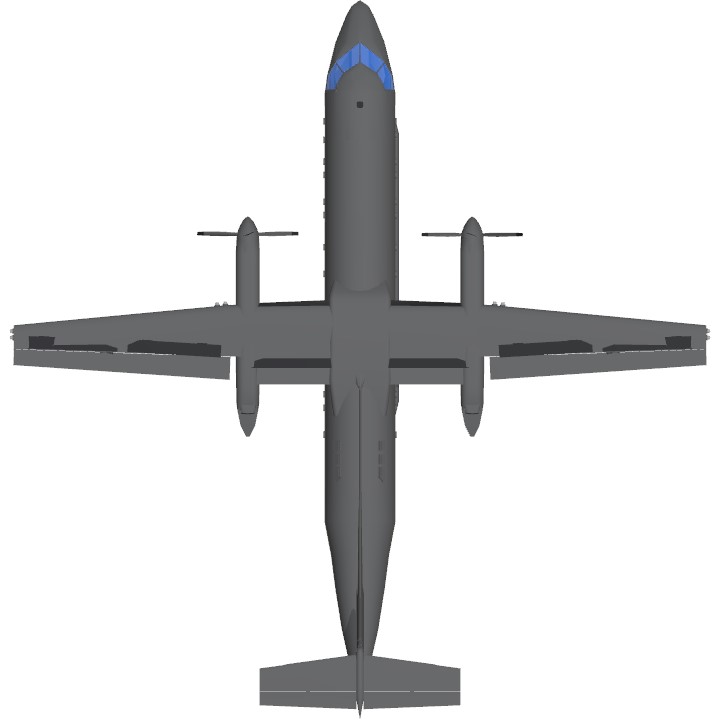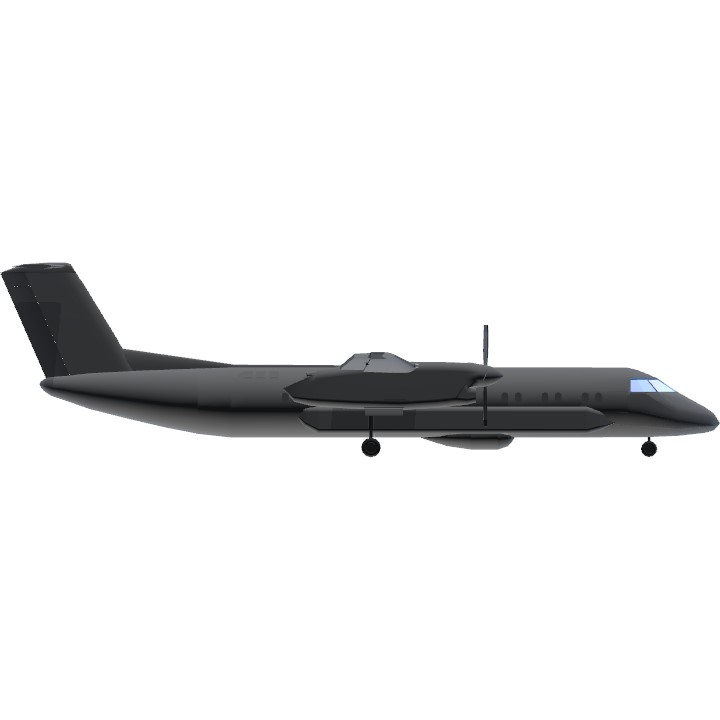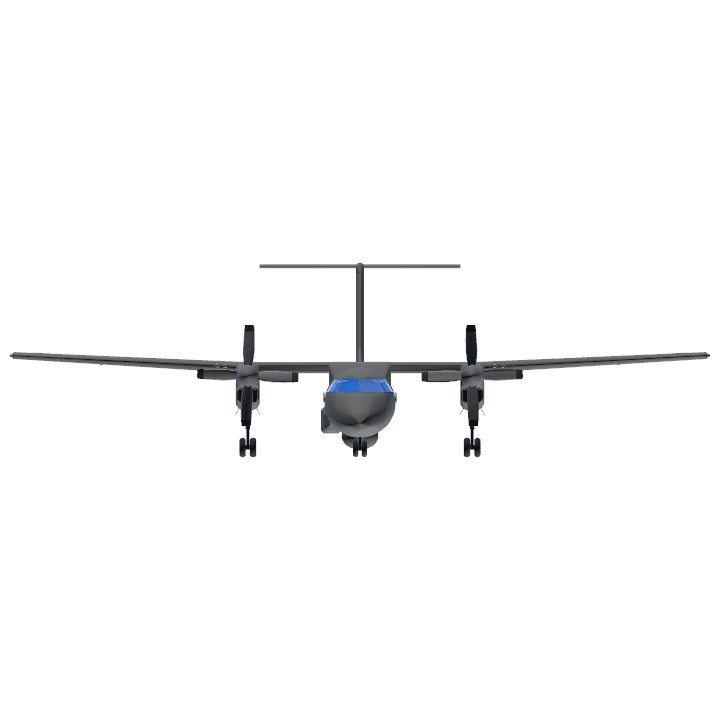Credits to: JacksEpicGamingYT's
Edit:easy to fly but sometimes you need to roll left and I can’t make it any shorter so it’s a bit unrealistic
USAF Fact Sheet: E-9A
Mission
The E-9A is a twin turboprop used as a surveillance platform to ensure the Gulf of Mexico waters are clear of civilian boaters and aircraft during live missile launches and other hazardous military activities. The E-9A provides support for air-to-air weapons system evaluation, development and operational testing at Tyndall Air Force Base, Fla.
Features
The E-9 is a short- to medium-range turboprop that is frequently used in short-haul regional airline operations in its civilian capacity. With its short take off and landing capability, the E-9 is uniquely suited to its Air Force mission. Its capabilities are airborne ocean surface surveillance, telemetry recording and relay
Modified with AN/APS-143(V) -1 Airborne Sea Surveillance Radar to detect objects in the Gulf of Mexico, the aircraft can detect a person in a life raft up to 25 miles away in the water. It downlinks this telemetry data to the range safety officer who determines the shoot area for live-fire activity.
The aircraft has a fixed antenna array that receives and records telemetry from test and drone vehicles flying over the Gulf of Mexico. It has the capability to relay two airborne UHF frequencies over the horizon to ground sites.
Background
The Bombardier Dash 8, formerly Canadian De Havilland, was launched in 1980 as a larger successor to the UV-18A Twin Otter, and a more fuel-efficient and advanced technological alternative to the RC-7 Airborne Reconnaissance - Low.
The modified civilian Dash-8 came into service in 1988 to the 53rd Weapons Evaluation Group and has supported the Weapon System Evaluation Program at nearby Eglin AFB, Fla., with sea surveillance radar and telemetry data collection since that time.
Among the program supported by the E-9 are proof of concept for the advanced cruise missile, the Navy Fjord missile program, and F-22 Raptor live missile testing.
The 82nd Aerial Targets Squadron located at Tyndall AFB, has the only E-9A aircraft in the Department of Defense inventory. The squadron is a subordinate unit of the 53rd Weapons Evaluation Group at Tyndall AFB. The 53rd WEG reports to the 53rd Wing at Eglin AFB, Fla.
General Characteristics
Primary function: Airborne telemetry support
Prime Contractor: Bombardier
E-9A Modification Contractor: Sierra Research
Power plant: Two Pratt & Whitney PW-120A turboprop engines
Thrust: 1,800 shaft horsepower per engine
Wingspan: 85 ft. (25.9 meters)
Length: 73 ft. (22.280 meters)
Height: 24 ft. 6 in. (7.467 meters)
Weight: 34,500 pounds (15,640 kilograms)
Maximum takeoff weight: 34,500 pounds (15,649 kilograms)
Fuel capacity: 5,600 pounds (2,540 kilograms)
Payload: 697 pounds (316 kilograms)
Speed: 280 mph (.367 Mach)
Range: 1,000 miles (1,609 kilometers)
Ceiling: 30,000 ft
Cost (modified): $16.5 million
Crew: 4 (two pilots, two mission operators)
Initial operating capability: June 1988
Inventory: Active force, 2; ANG, 0; Reserve, 0
Wiki: E-9A Widget
A United States Air Force range control aircraft that ensures that the overwater military ranges in the Gulf of Mexico are clear of civilian boats and aircraft during live fire tests of air-launched missiles and other hazardous military activities.[46] The E-9A Widget is equipped with AN/APS-143(V)-1 radar that can detect an object in the water as small as a person in a life raft, from up to 25 mi (40 km) away.[47] Aircraft operate out of Tyndall Air Force Base, Florida, with two aircraft assigned to the 82nd Aerial Targets Squadron for the support of training missions.
 The E-9A is used as an airborne platform and telemetry relay aircraft providing ocean surface surveillance and target telemetry of missiles fired for over the horizon profiles on the Gulf Ranges. (U.S. Air Force photo/Master Sgt. Michael Ammons)
The E-9A is used as an airborne platform and telemetry relay aircraft providing ocean surface surveillance and target telemetry of missiles fired for over the horizon profiles on the Gulf Ranges. (U.S. Air Force photo/Master Sgt. Michael Ammons)
Specifications
General Characteristics
- Created On iOS
- Wingspan 85.7ft (26.1m)
- Length 88.3ft (26.9m)
- Height 23.9ft (7.3m)
- Empty Weight 17,743lbs (8,048kg)
- Loaded Weight 22,565lbs (10,235kg)
Performance
- Power/Weight Ratio 1.493
- Horse Power/Weight Ratio 0.221
- Wing Loading 74.5lbs/ft2 (363.9kg/m2)
- Wing Area 302.7ft2 (28.1m2)
- Drag Points 6735
Parts
- Number of Parts 335
- Control Surfaces 15
- Performance Cost 1,357





@Blueshift thanks
great work- cool stuff !!